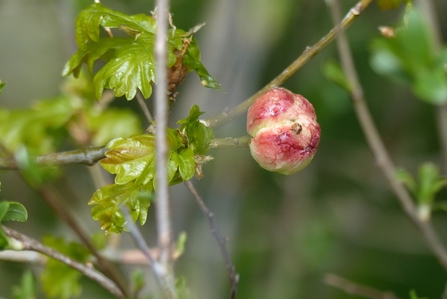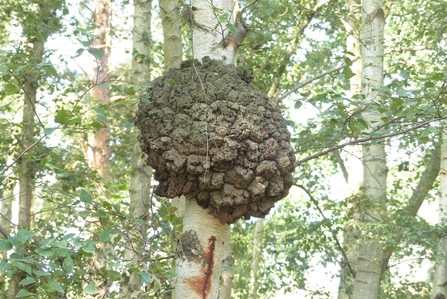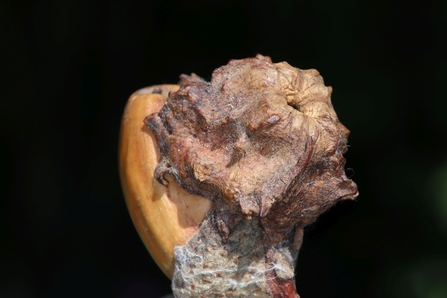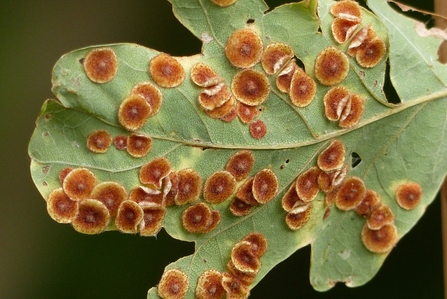Andrew Holtham is a longstanding Trust volunteer and tree specialist. Here, he shares his knowledge on the bizarre lumps, bumps and growths that occur on plants when they are invaded by different organisms - and how late summer is the perfect time to track them down....
In 1660 Charles II was restored to the English throne after eleven years of republican government. He entered London on 29th May, and in celebration this date became a public holiday right up till the mid nineteenth century. It was known as Oak Apple Day – but what is an Oak Apple?
Oak Apples are unusual growths on Oak trees that bear a passing resemblance to small apples. The story begins with a small wasp that lays its eggs in Oak buds at the end of winter. Somehow the eggs stimulate the buds to grow abnormally in spring – instead of producing leaves, shoots and flowers the bud grows into the Oak Apple with up to 30 wasp larvae safely living inside, each within its own separate chamber. They feed on the ‘apple’, grow, and eventually pupate inside their chambers. The adult wasps then chew their way out and fly off to continue their life cycle.
The Oak Apple is an example of a gall, an abnormal growth on a plant resulting from the stimulus of another organism that uses the growth for food and shelter. For every gall there is a gall causer (in this case the wasp), a host plant (in this case the Oak) and the abnormal growth (in this case the Oak Apple).





